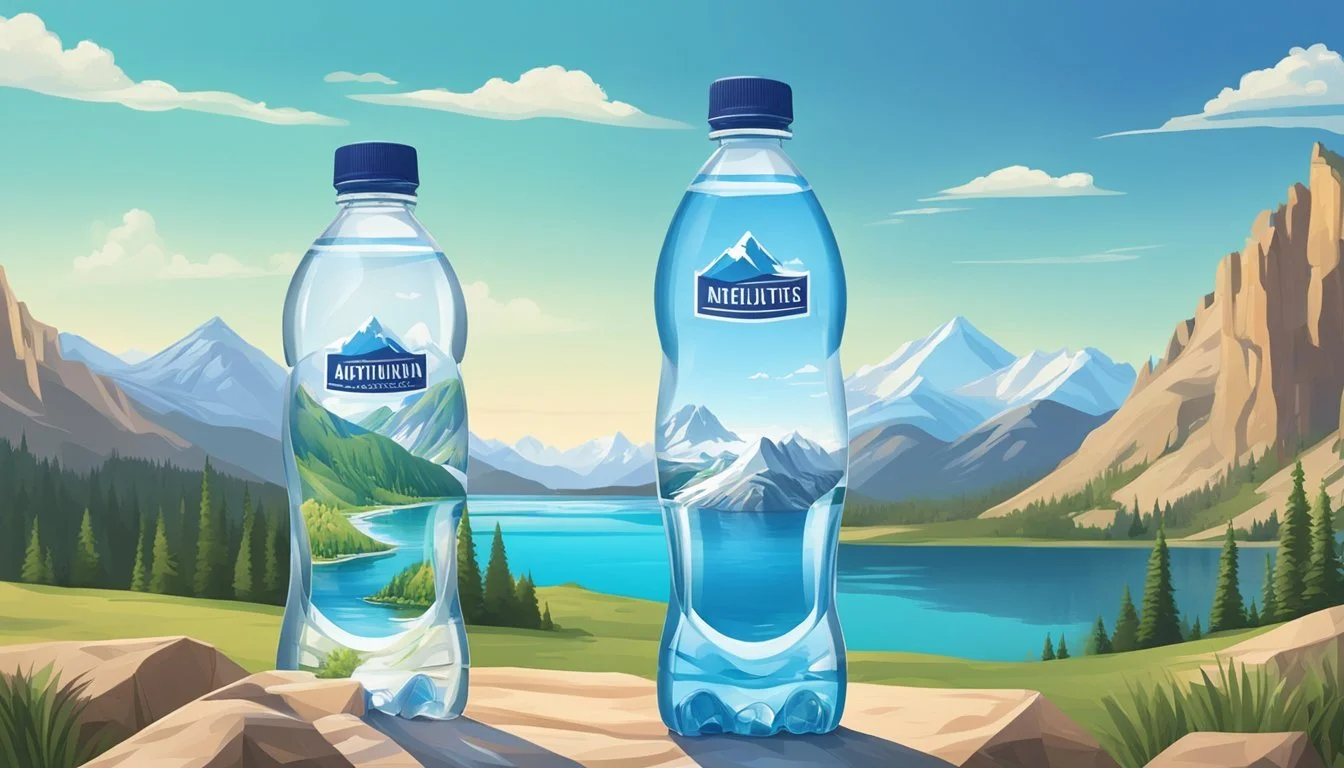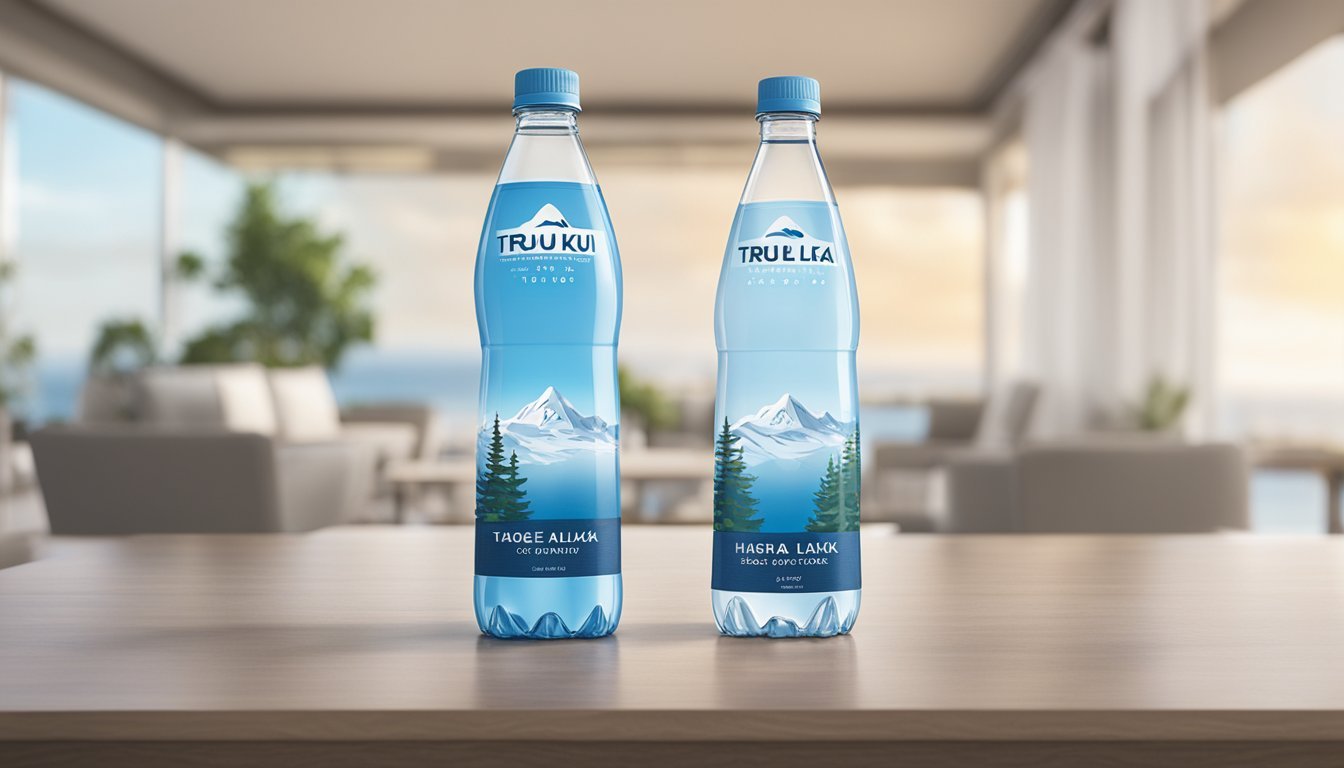Tahoe vs. Tru Alka
Which Bottled Water is Better? Comparing Purity and Taste
Choosing the right bottled water can often feel overwhelming with the numerous brands available. In today's spotlight are Tahoe and Tru Alka, two bottled waters with distinct characteristics. Tahoe offers a refreshing, clear taste derived from pristine natural sources. Tru Alka, on the other hand, stands out for its premium alkaline water, enriched with added electrolytes and boasting a pH level that supports hydration and wellness.
For those seeking a hydrating option with electrolyte balance, Tru Alka might be the better choice. This bottled water is ionized and purified to ensure consistency and quality. Tahoe appeals to those who appreciate water sourced from untouched, natural environments, providing a clean and crisp drinking experience.
Ultimately, the decision between Tahoe and Tru Alka depends on individual preferences and health goals. While Tahoe offers simplicity and purity, Tru Alka provides enhanced hydration benefits with its alkaline properties. Both brands have their unique strengths, making them standout choices in the crowded bottled water market.
Exploring the Contestants
Tahoe and Tru Alka offer distinctly different bottled water experiences, catering to varying tastes and health preferences. Each brand brings unique qualities to the table, from taste profiles to mineral compositions and alkalinity levels.
Profile of Tahoe
Tahoe Bottled Water is known for its neutral taste with minimal flavor, making it a favorite for those who prefer their water to taste clean and unobtrusive. Unlike brands like Arrowhead, which offer a slightly mineral taste, Tahoe remains consistent with the natural essence of water.
Tahoe is appreciated for its purity and consistency, often being compared to well-known brands such as Pure Life and Aquafina. It doesn’t feature added electrolytes or an alkaline pH but instead focuses on delivering a straightforward, refreshing hydration experience.
This brand appeals primarily to individuals looking for a reliable, pure bottling without the influence of additional minerals or flavors. Evian and Fiji also offer similar products, but Tahoe's price point can be more approachable, making it a competitive choice in the bottled water market.
Profile of Tru Alka
Tru Alka markets itself as a premium alkaline water, boasting a higher pH level typically around 9 to 10. This alkalinity is intended to help neutralize body acidity, which some believe may contribute to enhanced health benefits. In addition to its alkalinity, Tru Alka is enriched with added electrolytes, supporting hydration and electrolyte balance, especially beneficial for active lifestyles.
Tru Alka distinguishes itself from brands like Aquafina and Arrowhead by focusing on its health-oriented features. It stands with other premium waters such as Essentia and Smartwater, which also highlight enhanced mineral compositions and hydration properties.
The addition of specific minerals and electrolytes sets Tru Alka apart from more traditional offerings. For those looking for health benefits extending beyond hydration, Tru Alka presents a compelling option, akin to brands like LIFEWTR and Voss.
Understanding Water Quality and Sources
When evaluating bottled water, quality and sources are crucial factors. This section breaks down the purity of water and compares the benefits of natural springs with reverse osmosis.
Defining Water Purity
Water purity is determined by the absence of contaminants and the presence of essential minerals. Pure water should be free from harmful substances such as bacteria, chemicals, and heavy metals.
Mineral content also impacts purity. Water sources often contain minerals like calcium, magnesium, and potassium, which can enhance taste and health benefits. Brands like Tru Alka emphasize alkaline water with a high pH level to neutralize body acidity.
Quality assurance processes, including filtration and testing, ensure the bottled water meets safety standards before it reaches consumers.
Natural Springs Vs. Reverse Osmosis
Natural springs provide a water source that is naturally filtered through layers of soil and rock. This process enriches the water with minerals and often results in a refreshing taste.
Brands like Tahoe draw from these springs, promoting their water's origin and purity. Natural spring water is valued for its mineral content and minimal processing.
Reverse osmosis, in contrast, involves a meticulous filtration process that removes impurities and contaminants from municipal water supplies. This method ensures a high level of water purity by eliminating even microscopic particles.
Both natural spring and reverse osmosis water have unique benefits. Natural springs offer naturally enriched water, while reverse osmosis provides extremely purified water, often supplemented with added minerals for taste and health.
Health and Hydration Benefits
Both Tahoe and Tru Alka offer notable health benefits, focusing significantly on hydration and essential minerals beneficial for bodily functions, bone health, and muscle function.
Essential Minerals for the Body
Tahoe water is sourced from natural waterways, often rich in calcium and magnesium. These minerals play crucial roles in bone health and muscle function. Calcium is essential for maintaining strong bones and teeth. Magnesium aids in over 300 biochemical reactions in the body, supporting everything from muscle contraction to nerve function.
Tru Alka, on the other hand, emphasizes its enriched alkaline composition and added minerals. It aims to balance the body's pH levels. The inclusion of potassium and magnesium in Tru Alka can aid in critical bodily processes, such as regulating fluid balance and supporting muscular and cardiovascular functions. The fortified mineral content can also help individuals meet their daily mineral requirements.
Hydration and Electrolyte Balance
Hydration is vital for all bodily functions. Tahoe's natural spring source helps maintain hydration by providing clean and pure water. Proper hydration supports kidney function and skin health, among other benefits. Drinking Tahoe water can aid in meeting daily fluid intake requirements, ensuring that the body's systems function smoothly.
Tru Alka highlights its approach to electrolyte balance. The alkaline water contains electrolytes that assist in maintaining hydration levels, especially after physical activity. These electrolytes, including sodium and potassium, are vital for nerve signal transmission and muscle contractions. This makes Tru Alka a good option for athletes or those needing to quickly restore lost fluids and electrolytes after exercise.
Understanding these key aspects can help consumers make informed decisions about which water meets their health and hydration needs better.
The Production Journey
Understanding the differences in production methods between Tahoe and Tru Alka water reveals their unique qualities. Tahoe water is known for its natural sourcing and minimal processing, while Tru Alka focuses on enhancing its water through advanced purification techniques.
Filtration and Purification Methods
Tahoe water combines natural sourcing with basic filtration to retain its mineral content. It is sourced from natural springs, undergoing minimal filtration to remove impurities while maintaining essential minerals. This natural mineral water is then bottled, allowing consumers to enjoy water as close to its natural state as possible.
Tru Alka water adopts a different approach. It undergoes intensive purification, including reverse osmosis and micro-filtration, to remove nearly all impurities. Post-filtration, it is ionized to increase alkalinity and infused with electrolytes. This process results in a highly purified, alkaline water designed to support hydration and electrolyte balance.
Analyzing Water Characteristics
When comparing Tahoe and Tru Alka bottled waters, it is essential to examine key elements such as pH Level and Alkalinity and Taste Profile and Mineral Content. Each has unique features that may appeal to different preferences and health considerations.
pH Level and Alkalinity
Tru Alka water is known for its high pH level, typically around 9 to 10. This high pH classifies it as alkaline water, which some believe can help neutralize body acidity. It is ionized to enhance its alkalinity, making it a popular choice for those looking to balance their body's pH levels.
Tahoe water, sourced from the pristine Tahoe Basin, maintains a neutral to slightly alkaline pH. While its exact pH can vary, it is generally less alkaline than Tru Alka. This difference in pH levels is crucial for consumers looking for specific alkalinity in their water choice.
Taste Profile and Mineral Content
Tru Alka promotes a distinct taste profile, often attributed to its alkaline nature and added minerals. The inclusion of specific minerals and additives aims to improve health, contributing to its unique water taste.
Tahoe water, with its mineral content sourced from natural sources, offers a refreshing and clean taste. Notably, it has moderate potassium and low sodium levels. The varying mineral contents in Tahoe water contribute to a balanced and often preferred taste profile.
These differences in taste and mineral composition are essential for consumers when selecting bottled water, as they cater to different taste preferences and health benefits.
Comparing Environmental Impacts
Tahoe and Tru Alka bottled water brands both affect the environment in unique ways. Key considerations include their sustainability practices and initiatives to reduce plastic waste and improve recycling.
Sustainability of Water Brands
Tahoe sources its water from natural springs, emphasizing minimal environmental disruption. Tru Alka, in contrast, focuses on water purification processes to deliver alkaline water.
Sustainability efforts differ between the two. Tahoe's commitment includes preserving natural water sources, while Tru Alka tends to invest in eco-friendly production methods.
Energy consumption is another factor. Tru Alka employs advanced purification systems, potentially consuming more energy compared to Tahoe’s more straightforward extraction process.
Each brand’s approach to sustainable water management varies, impacting their overall environmental footprint.
Plastic Waste and Recycling Initiatives
Both brands use plastic bottles, contributing to plastic waste. Tahoe has started to use recycled plastic for its bottles, aiming to lower new plastic production.
Tru Alka also invests in packaging, prioritizing biodegradable and recyclable materials. Their bottles often feature highly recyclable plastics, enhancing their disposal process efficiency.
Recycling initiatives are crucial. Tahoe offers incentives for returning used bottles, promoting a circular economy. Tru Alka supports similar programs, encouraging consumer participation in recycling efforts.
Plastic reduction and recycling are pivotal areas where each brand strives to limit environmental impact, demonstrating dedication toward more sustainable packaging solutions.
Price and Accessibility
Tahoe and Tru Alka differ significantly in price and availability, which can influence a consumer's choice based on personal preference and lifestyle. Below, the details regarding the cost and convenience of accessing each brand are discussed.
Cost Comparison and Value
Tahoe is often recognized for its competitive pricing. It typically falls within a mid-range price bracket, making it an appealing choice for budget-conscious consumers.
For example, a 12-pack of 16.9 oz bottles may cost around $15-$18.
Tru Alka, marketed as a premium alkaline water, commands a higher price.
A similar 12-pack might cost between $30-$35. This price reflects its high pH level and added electrolytes, which some users find beneficial.
Consumers need to weigh the cost against the perceived health benefits, which can be a decisive factor for those prioritizing hydration and wellness aspects of bottled water.
Availability and Convenience
Tahoe water is widely available across various retail channels, including supermarkets, convenience stores, and online marketplaces.
Its distribution network is robust, enhancing its accessibility for customers who need a reliable, everyday water source.
Tru Alka, being a niche product, can be less accessible and may be found primarily in specialized stores or through online platforms.
While it offers the convenience of direct doorstep delivery, especially for subscribers, it may not be as readily available in local stores.
The limited physical availability may be a point of consideration for those preferring in-store purchases. Nonetheless, for those who value premium quality and are willing to plan their purchases, Tru Alka's delivery options provide an added layer of convenience.
Regulatory and Safety Standards
Comparing Tahoe and Tru Alka involves looking at the regulations and safety standards each adheres to. Focus areas include adherence to EPA regulations and the management of contaminants to ensure water quality and consistency.
Understanding EPA Regulations
The Environmental Protection Agency (EPA) sets the standards for drinking water safety in the United States. Bottled water brands, including Tahoe and Tru Alka, must comply with these guidelines to ensure quality and safety. Bottled water is also regulated by the FDA, which often aligns its standards with those of the EPA but applies additional scrutiny because it is considered a packaged food product.
EPA regulations cover a variety of contaminants, including microbial, chemical, and radiological substances. Bottled water companies are required to test their products regularly and demonstrate compliance through rigorous documentation. Compliance with these standards ensures that the water is safe for consumption and free from harmful contaminants.
Contaminants and Water Safety
Water safety is a paramount concern for both Tahoe and Tru Alka. The EPA's regulatory framework categorizes contaminants into several groups, such as microbiological agents (e.g., E. coli), chemical pollutants (e.g., lead, mercury), and radiological contaminants (e.g., radon). Regular testing and validation of water quality help prevent these contaminants from reaching consumers.
Tahoe typically uses PET plastic bottles, while Tru Alka often opts for glass bottles. PET plastic can contain Bisphenol A (BPA), a chemical linked to health risks, though many brands now use BPA-free plastics. Using glass can eliminate concerns about BPA entirely, contributing to better safety and consumer confidence in the product's purity and consistency.
Ensuring high-quality bottled water means constant vigilance and adherence to stringent standards that protect public health. Making informed choices between brands can often come down to examining these crucial regulatory and safety differences.
More About Tahoe
Mountain Valley Spring Water vs Tahoe: Which Bottled Water is Better?
Tahoe vs Richard's Rainwater: Which Bottled Water is Better?
Tahoe vs Whole Foods Italian Still Mineral water: Which Bottled Water is Better?
More About Tru Alka
Hawaiian Springs vs Tru Alka: Which Bottled Water is Better?
Icelandic Glacial vs Tru Alka: Which Bottled Water is Better?
Mountain Valley Spring Water vs Tru Alka: Which Bottled Water is Better?
Nestle Pure Life vs Tru Alka: Which Bottled Water is Better?
Tru Alka vs Cascade Mountain: Which Bottled Water is Better?
Tru Alka vs Kirkland Signature: Which Bottled Water is Better?
Tru Alka vs Richard's Rainwater: Which Bottled Water is Better?
Tru Alka vs Talking Rain AQA: Which Bottled Water is Better?
Tru Alka vs Whole Foods Italian Still Mineral water: Which Bottled Water is Better?







